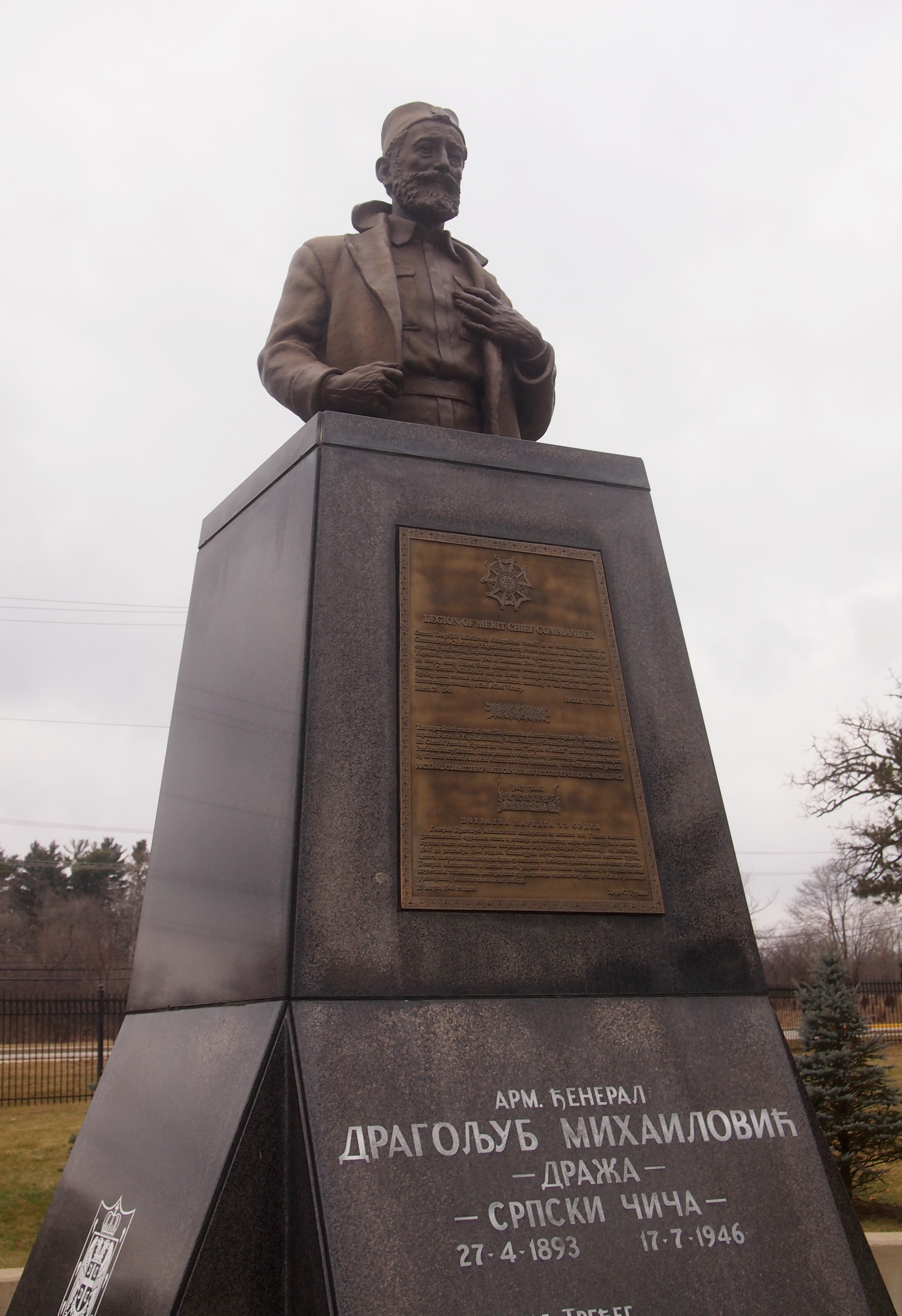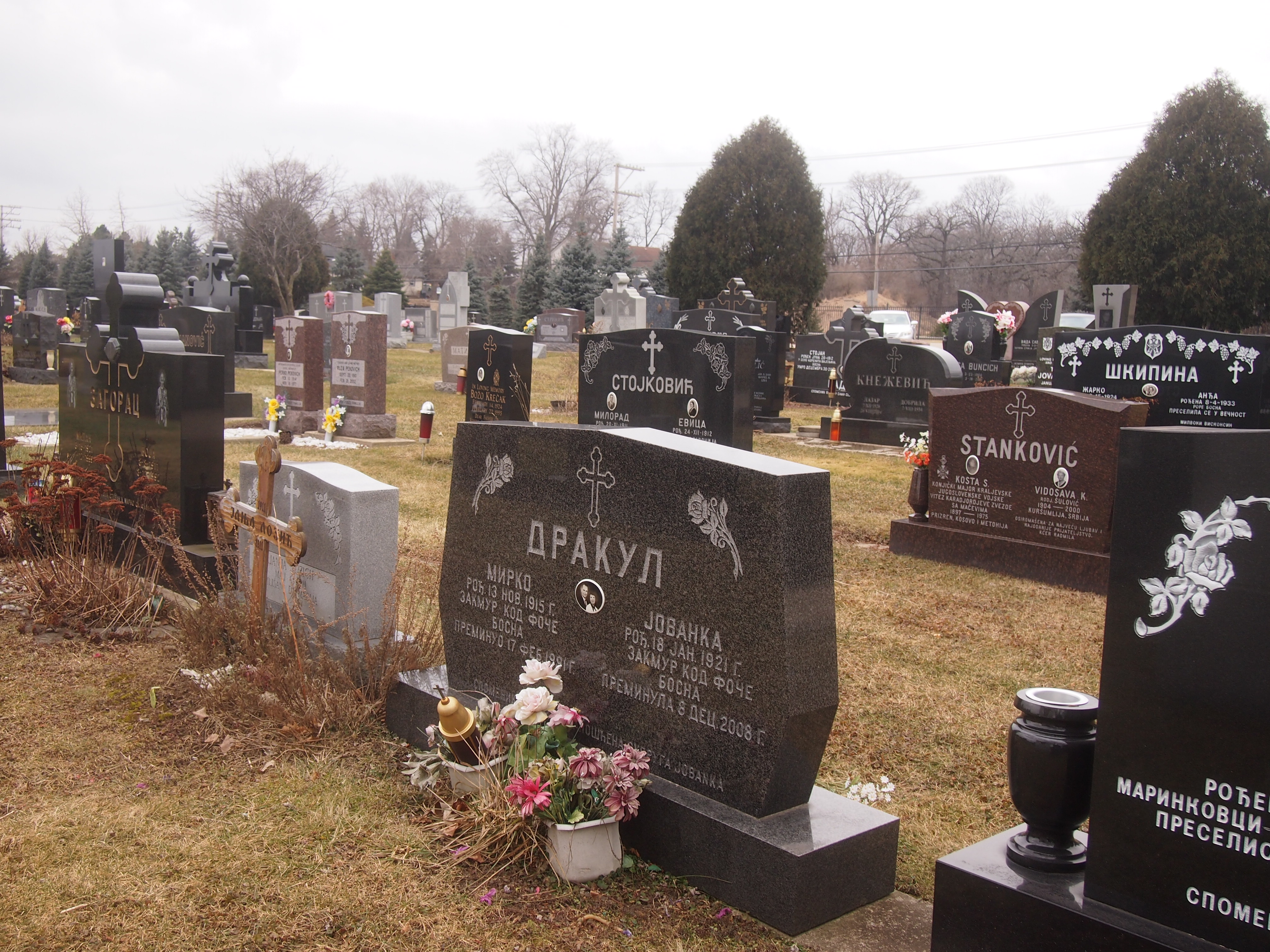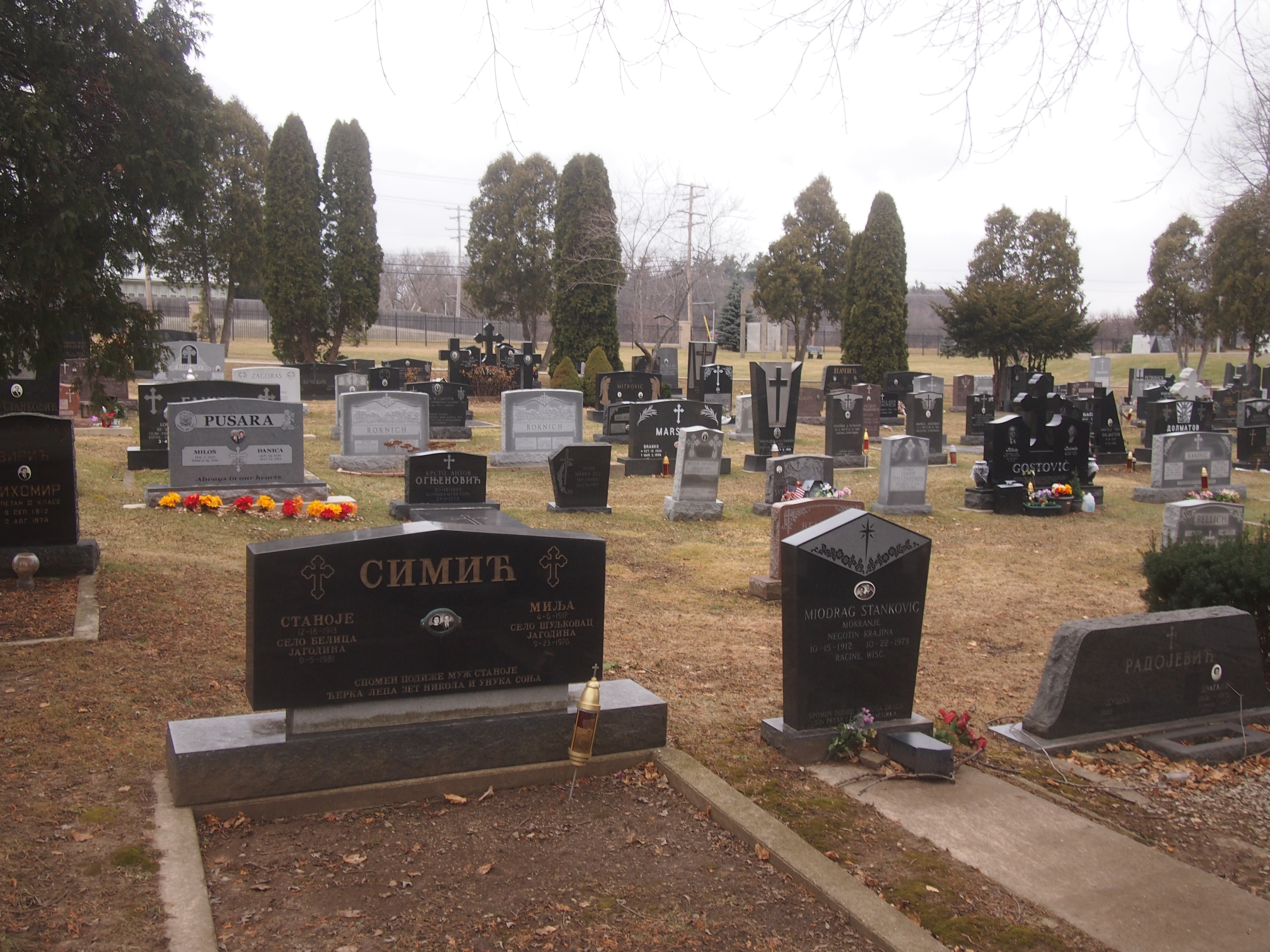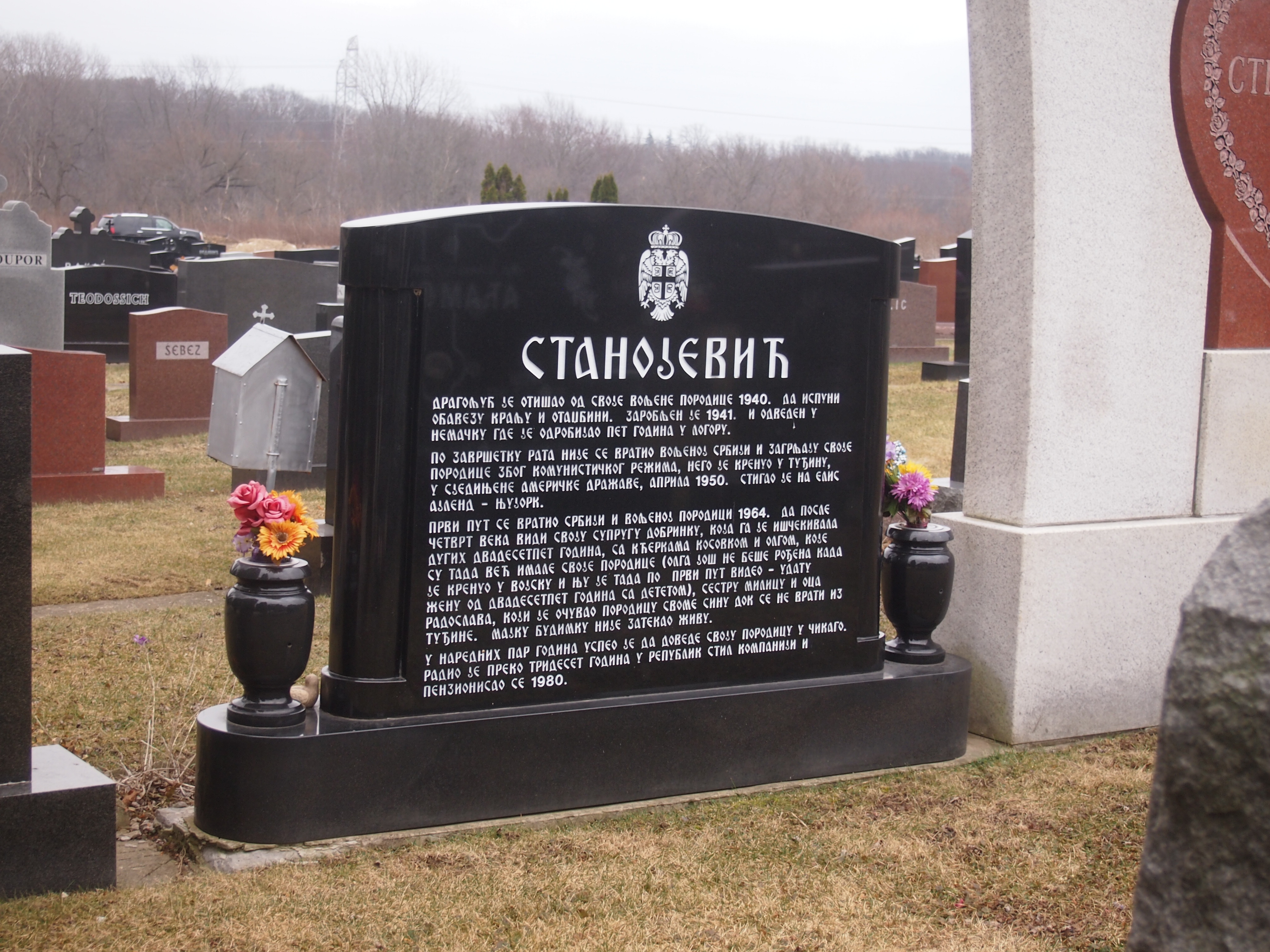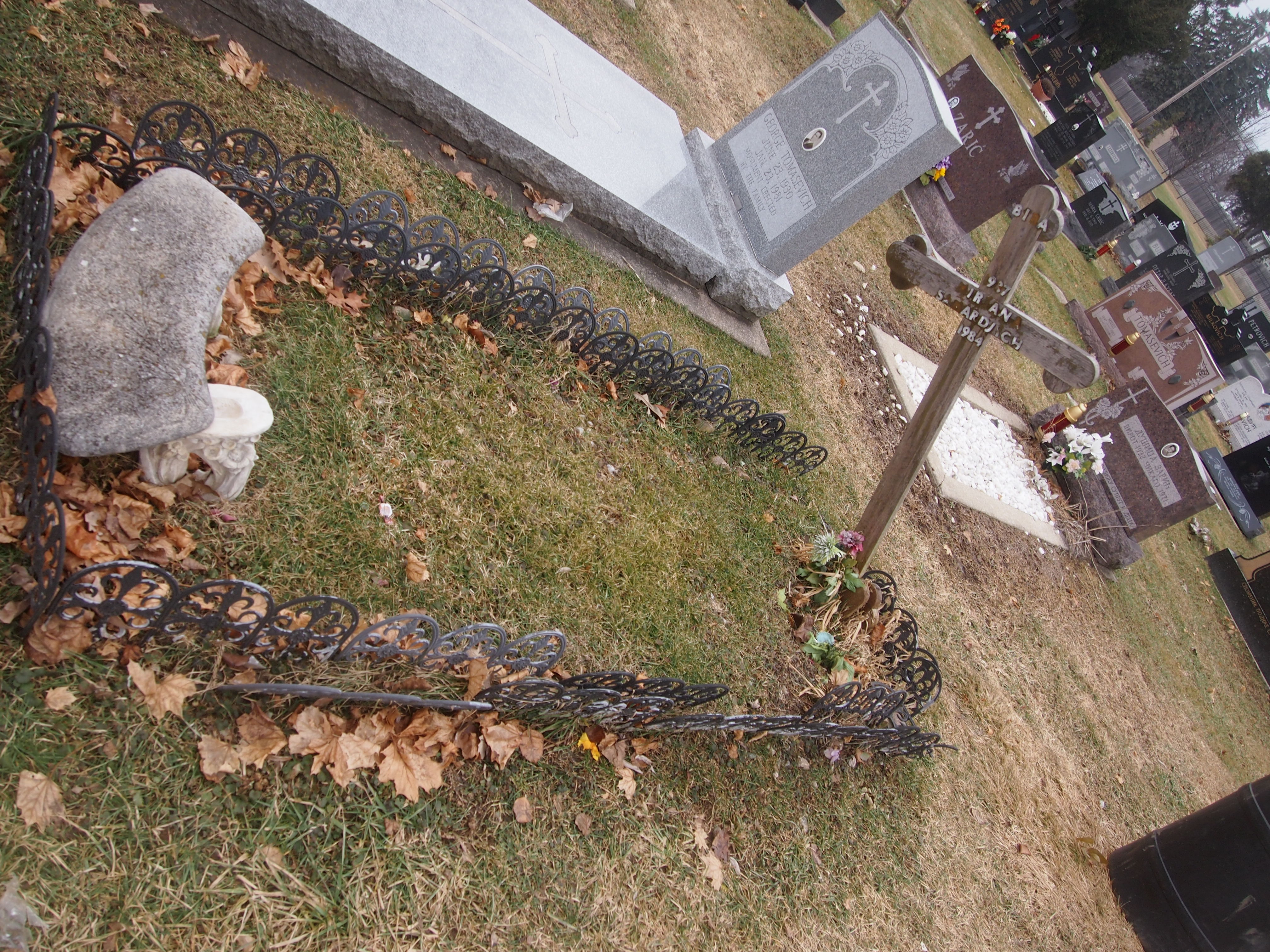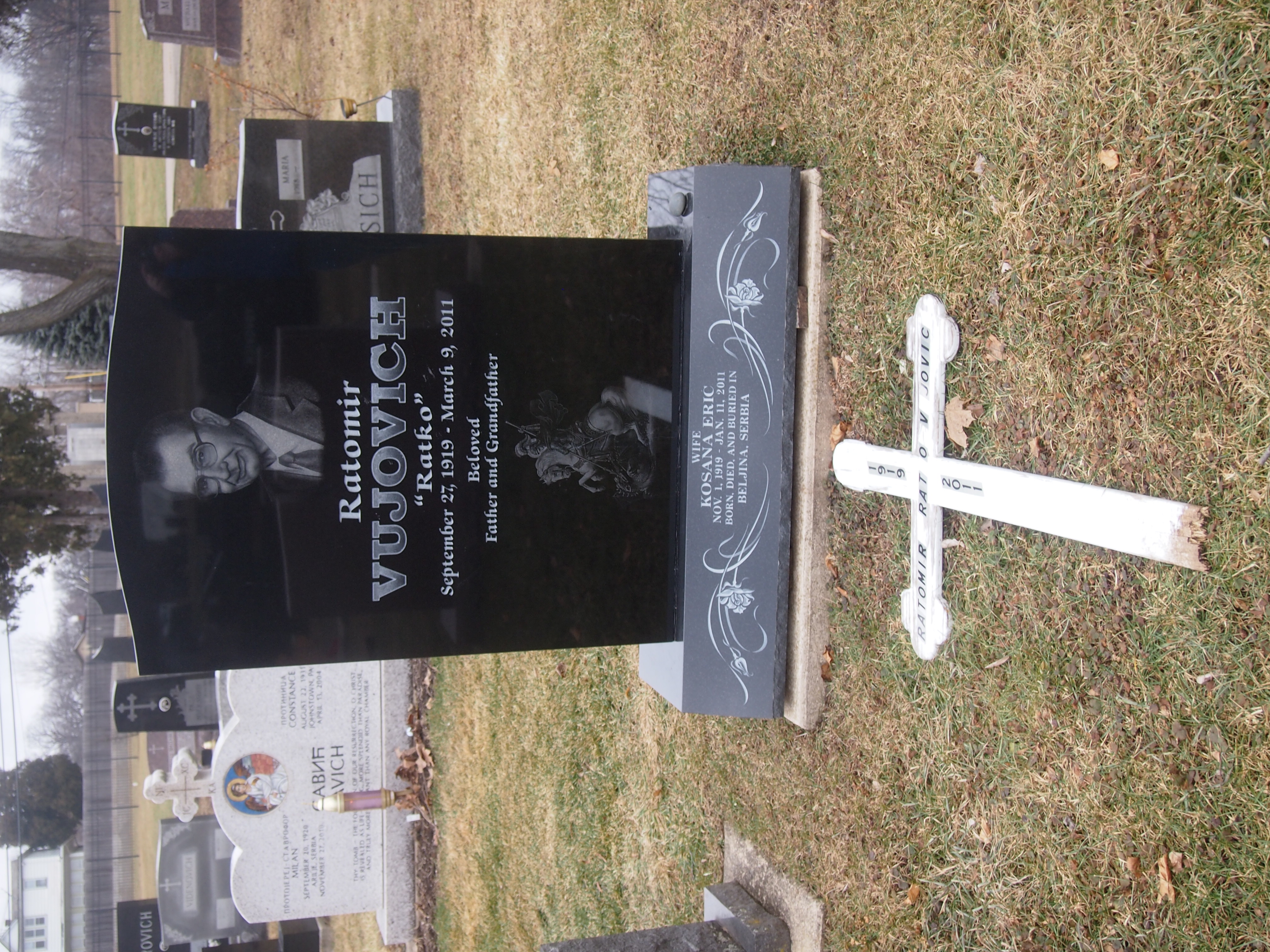Next to the the cemetery of the St. Sava Serbian Orthodox Monastery in Lake County, which I visited on Saturday, is a handsome church building belonging to the monastery. There’s something about onion domes that pleases the eye.
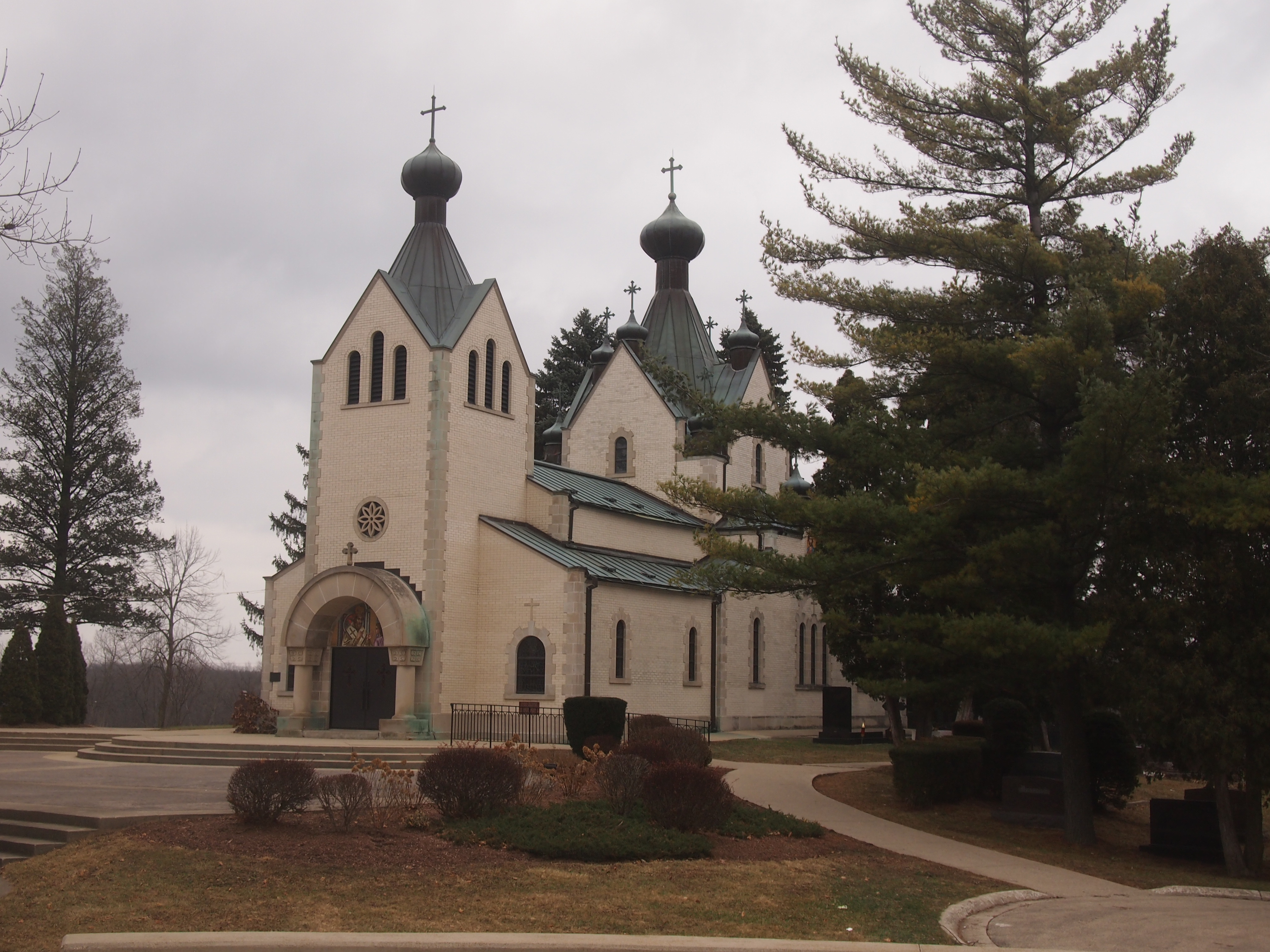
Even without the domes, the structure has a pleasing aspect to it. The cornerstone dates the building to 1925. Back then there couldn’t have been much around it besides farmland. Even now, the area nearby is mostly undeveloped.
I fully expected the building to be locked. It wasn’t. I went inside and found myself alone with its striking interior, albeit a little dark.
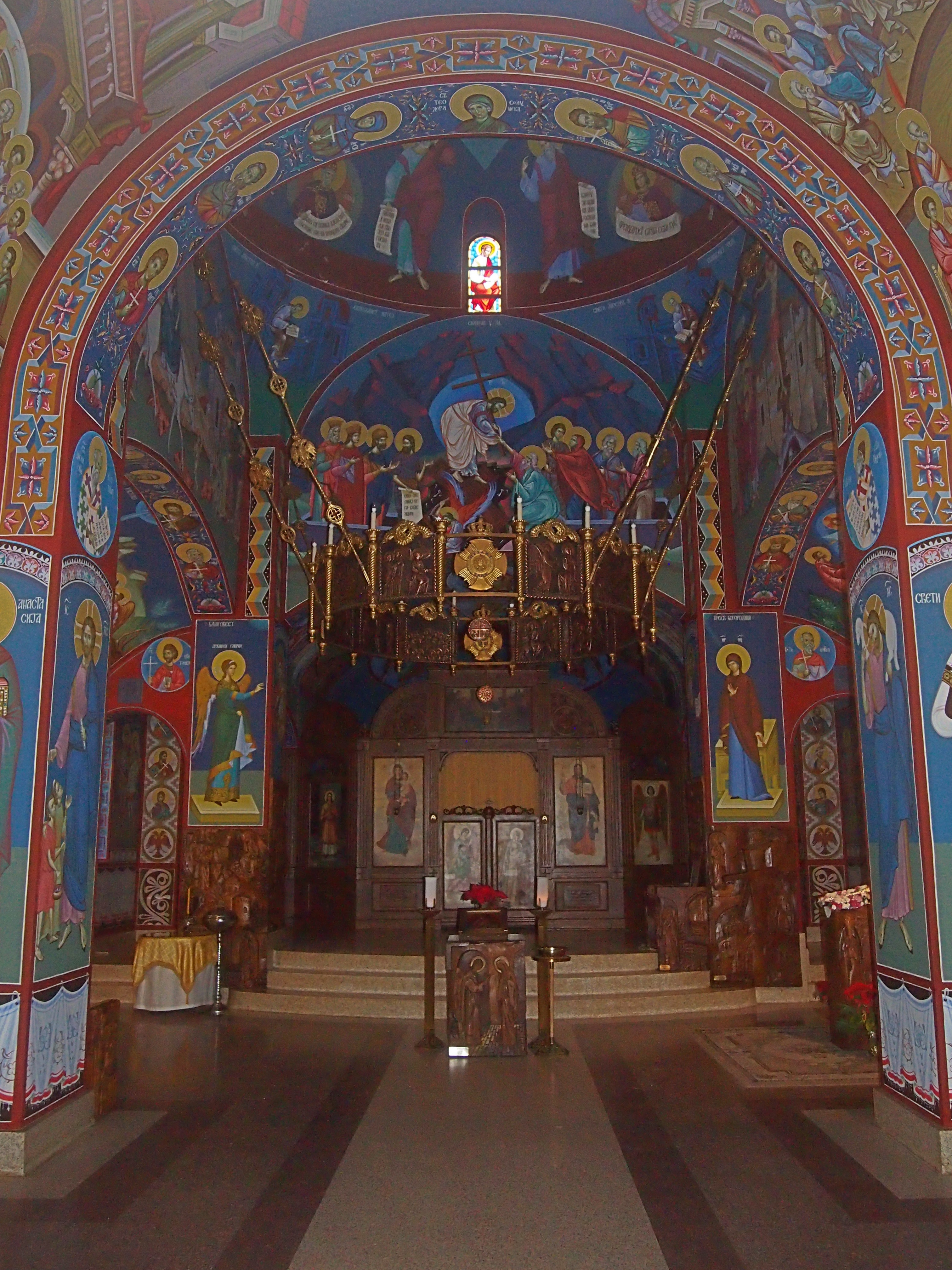
A panoply of Jesus and saints and holy men — I assume that’s what I saw — graced pretty much every surface.
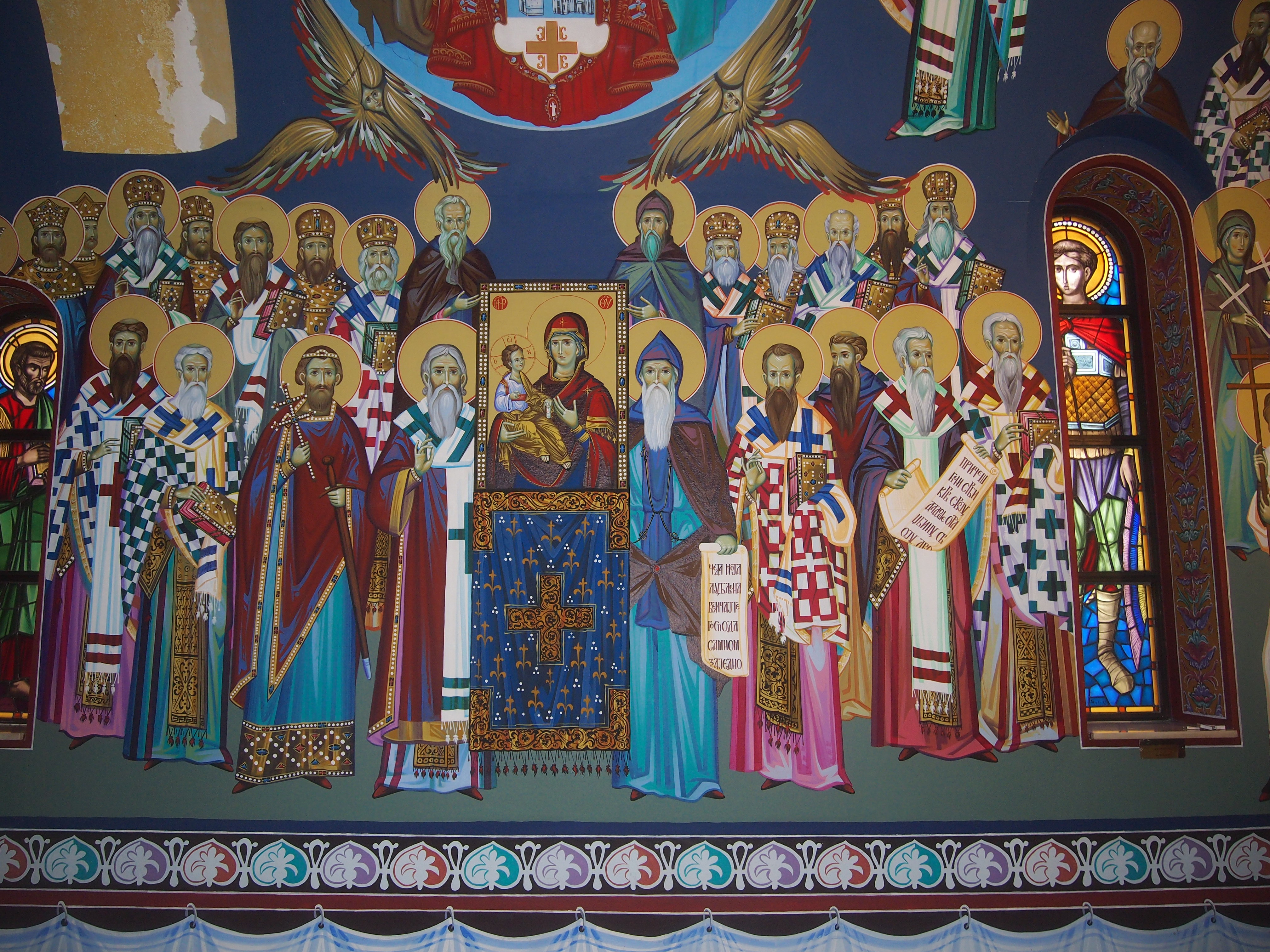
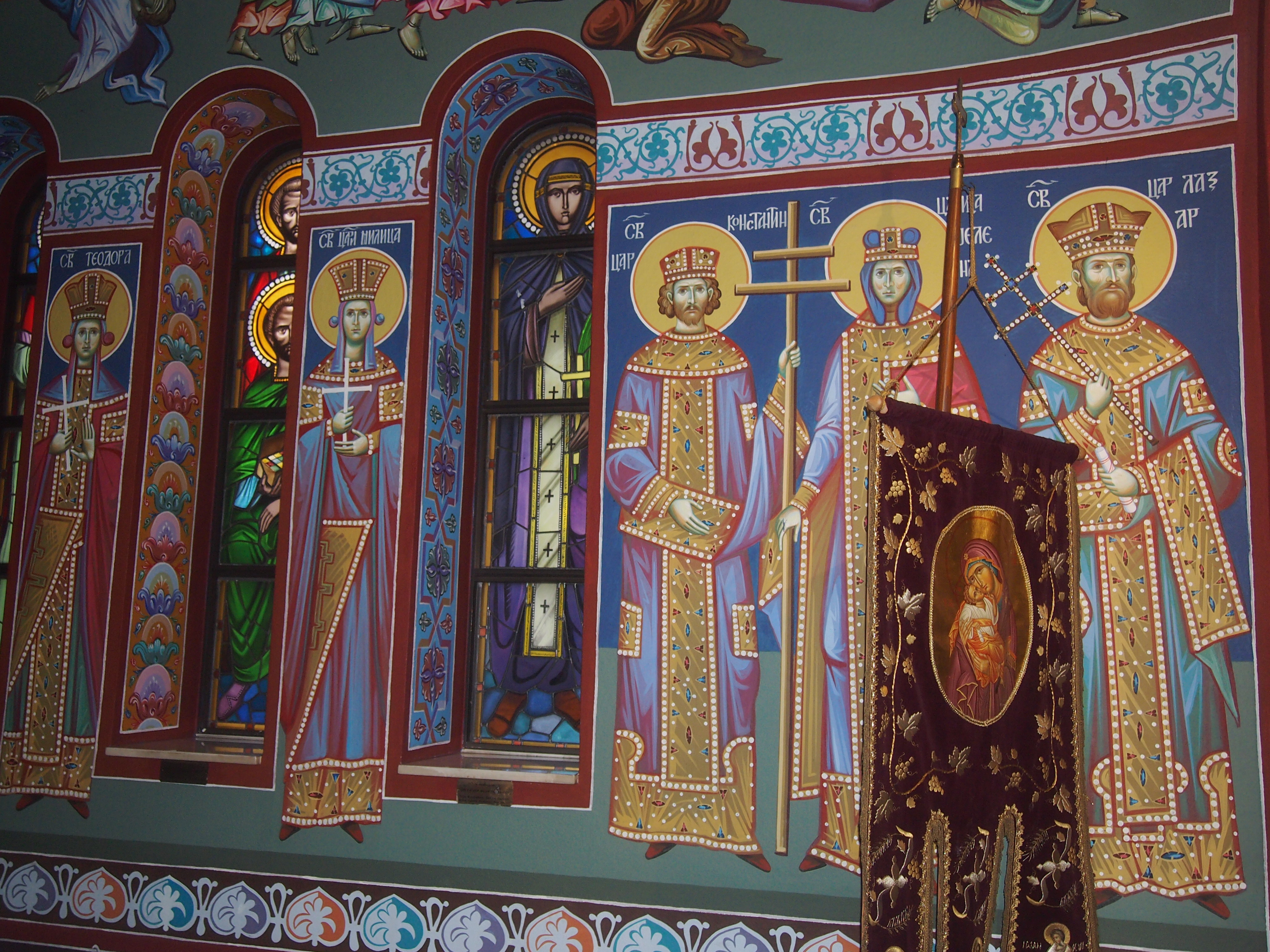 Angles and demons, too.
Angles and demons, too.
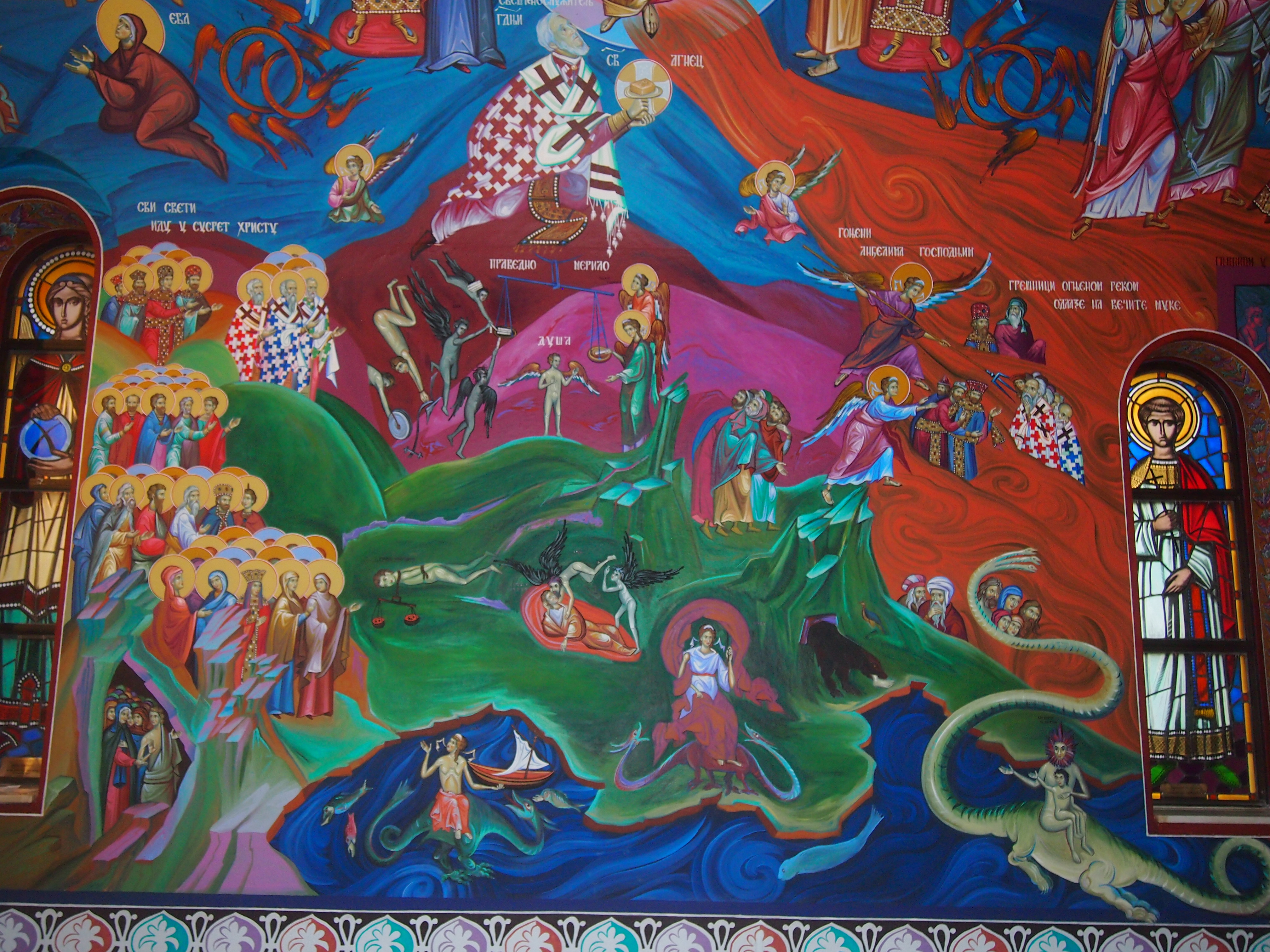 Looking up.
Looking up.
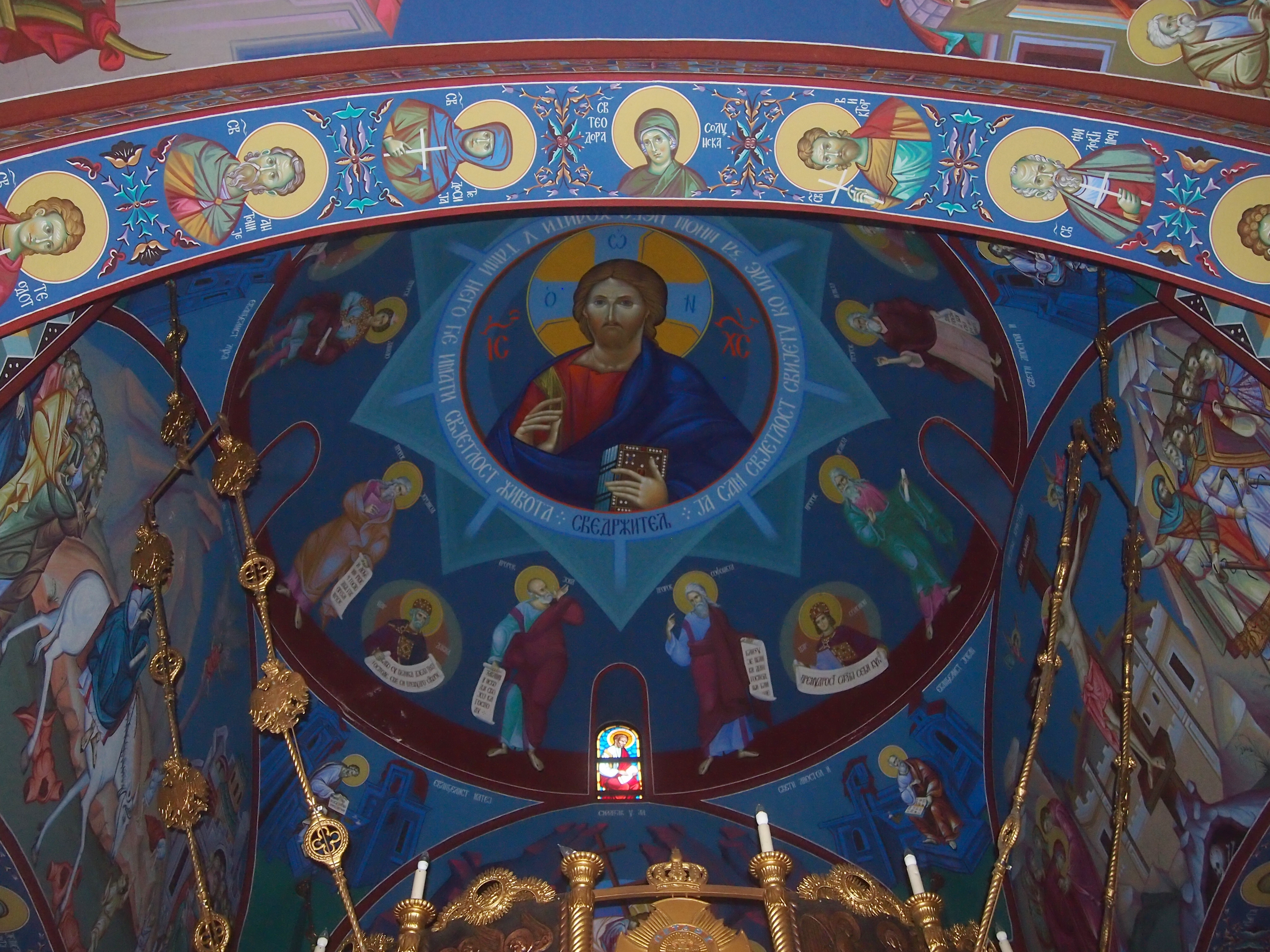 King Peter II of Yugoslavia used to be interred in the church. Here’s the spot where he was until a few years ago.
King Peter II of Yugoslavia used to be interred in the church. Here’s the spot where he was until a few years ago.
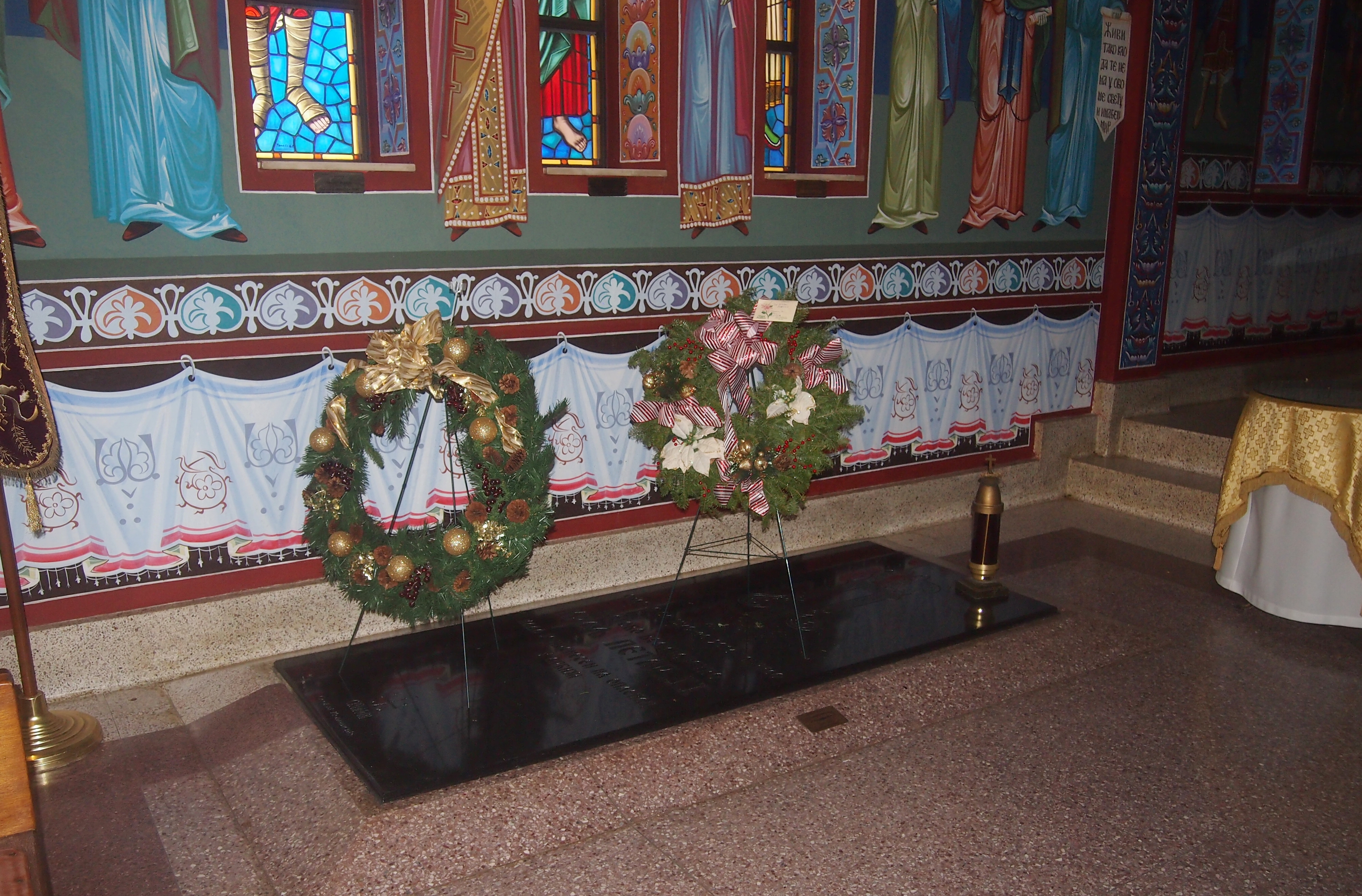 Presumably the place is now a memorial to the king, marked with black stone instead of the white that used to be there.
Presumably the place is now a memorial to the king, marked with black stone instead of the white that used to be there.
I suspect that Peter’s story isn’t much known to Americans outside the Yugoslav diaspora. I only knew the outline, so I did some reading. Already on the throne, he was chased out of Yugoslavia at age 17 by the Nazis in 1941, and the post-war Tito government wasn’t interested in letting him return.
He spend much of his exile in the U.S., dying fairly young in 1970. For his own reasons, he wanted to be buried at St. Sava. Probably something to do with the schism going on within the Serbian Orthodox Church at the time, but I’m not going into the briar patch someone else’s schism by looking into the matter further. In any case, his son Alexander oversaw the repatriation of Peter’s remains to Serbia in 2013.
My reading led me to the web site of the Royal Family of Serbia, which is how Alexander, the claimant to the throne, styles it. It’s a well-designed and sophisticated site, offering a lot of information about Alexander — who styles himself HRH Crown Prince Alexander — and his family.
“Although King Peter II died in 1970, the Crown Prince, as the heir to the throne decided at the time not to use the title of King – which he felt would have had little meaning in exile,” the site explains. “He made it very clear at that time that he was not renouncing his title, or the dynastic right to the throne.”
Unlike a lot of pretenders, Alexander and his family actually get to live in the palace of their ancestors, which is near Belgrade and which his grandfather built. He’s had a residence there since moving to then-Yugoslavia after the overthrow of Slobodan Milošević.
The web site’s news page is incredibly detailed, with hundreds of releases about the family’s activities stretching back a number of years. Some recent examples:
More than 1,200 children at traditional White Palace Christmas receptions
Royal couple at the celebration of the Chartwell International School
Crown Princess Katherine as the patron of the first regional Veuve Clicquot Business Woman Award
Speech by Crown Prince Alexander at the monument of Vasa Carapic
Crown Prince Alexander at Military Museum exhibition opening
It occurs to me that Alexander is living precisely as he would, were he actually a constitutional monarch, and pretty much along the lines of the British approach (he grew up in the UK, after all, and was a captain in the 16th/5th The Queen’s Royal Lancers). No doubt he believes that if he acts like a monarch long enough and well enough, one day he or an heir will be King of Serbia.
 Ann was with me, and I had take this shot with her phone. The car was in a northwest suburban parking lot.
Ann was with me, and I had take this shot with her phone. The car was in a northwest suburban parking lot.